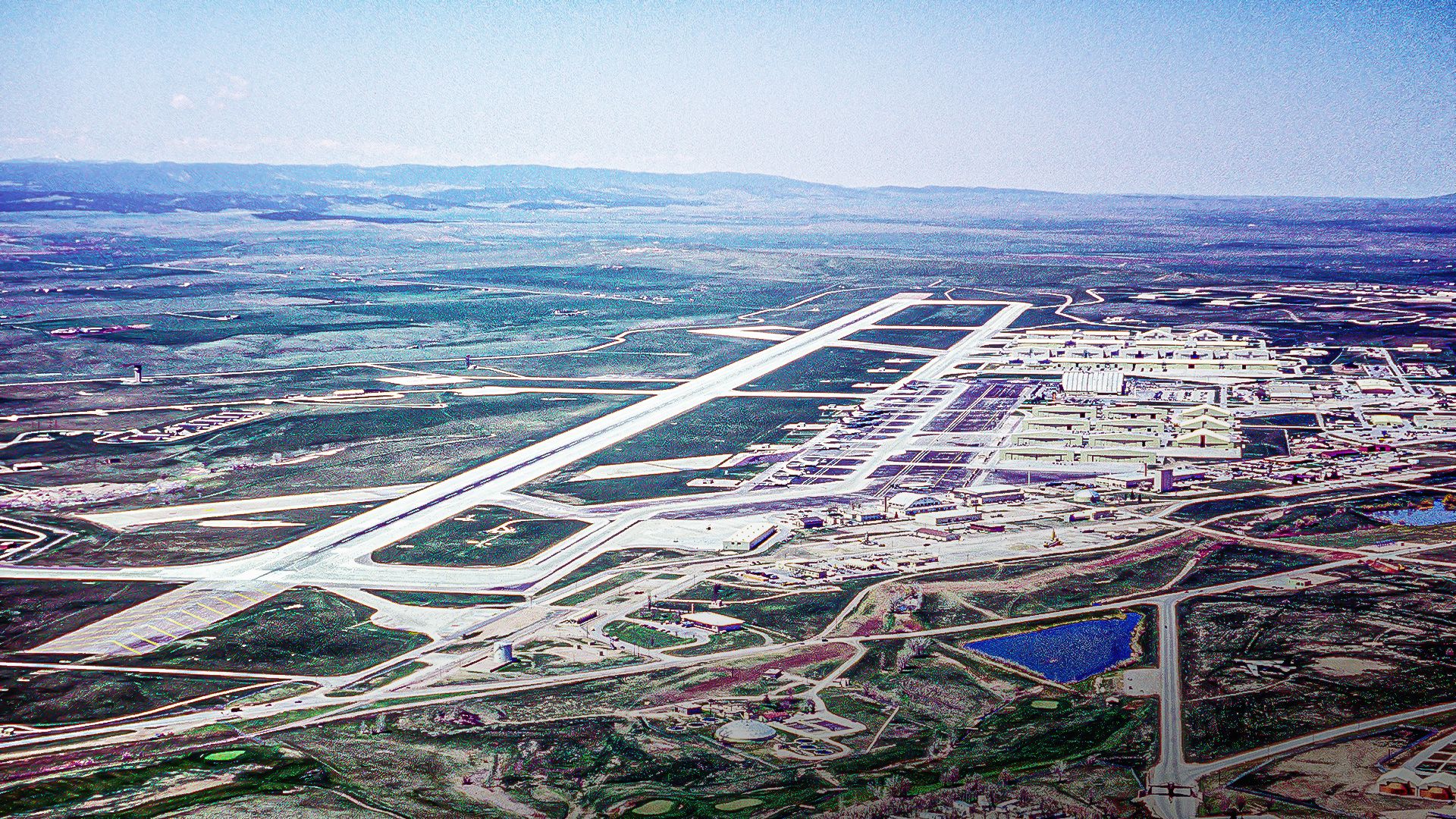World
Discover the Largest US Air Force Bases by Runway Length

Across the United States, the Air Force operates a vast network of airfields designed to support the deployment of sophisticated aircraft. These airfields feature runways of varying lengths, each engineered to handle specific aircraft requirements. Recent analysis highlights the five longest runways in the United States Air Force (USAF), illustrating their significance in facilitating operations under diverse environmental challenges.
Nellis Air Force Base: A Tactical Hub in Nevada
Located on the outskirts of Las Vegas, Nellis Air Force Base boasts a runway measuring 10,120 feet (3,085 meters). While it appears as the shortest among the longest, its dimensions are critical for the intensive training exercises conducted there. Nellis serves as the home of the Air Force Warfare Center, providing a training ground for advanced aircraft such as the F-35, F-22 Raptor, and A-10 Warthog.
The challenges of summer temperatures in southern Nevada, which can reach triple digits in Fahrenheit, necessitate a longer runway to accommodate the reduced thrust and performance of aircraft. Nellis has historical roots dating back to World War II, serving various roles as the Air Force’s premier fighter training site and undergoing multiple upgrades to support the evolution of military aviation.
Kirtland Air Force Base: A Strategic Installation in New Mexico
Further along the list is Kirtland Air Force Base in Albuquerque, with a runway that extends 13,795 feet (4,205 meters). This base is renowned for its diverse mission profile, hosting over 100 tenant units and serving as a pivotal hub for special operations, nuclear sustainment, and research activities.
Kirtland’s elevation, sitting more than a mile above sea level, makes the extra runway length essential. The increased takeoff distances required for fully loaded aircraft operating at high altitudes make Kirtland crucial for year-round operations. The base’s historical significance dates back to the 1940s and includes a role in early nuclear research.
Eielson Air Force Base: Meeting Arctic Challenges in Alaska
Located in Alaska’s interior, Eielson Air Force Base features a runway measuring 14,530 feet (4,429 meters). This substantial length is necessary to accommodate the extreme weather conditions that characterize the region, where winter temperatures can plummet below -40°F. The icy runway conditions impose unique demands on both aircraft and pilots, requiring adaptations for safe operations.
The base plays a key role in the international Red Flag–Alaska training exercises, which attract numerous aircraft from the USAF and allied nations. Eielson’s history dates back to World War II, where it initially supported Lend-Lease operations, and its strategic location has made it vital for Arctic missions.
Elmendorf Air Force Base: A Major Defense Installation
Now known as Joint Base Elmendorf–Richardson, Elmendorf Air Force Base features a runway extending 14,998 feet (4,571 meters). Originally built during World War II, it has evolved into a crucial center for air defense operations in the Pacific. The base accommodates heavy airlift and fighter squadrons, ensuring a robust operational capability in the face of Alaska’s severe weather.
The length of Elmendorf’s runway is especially beneficial during harsh winters, where fluctuating conditions can present challenges for aircraft operations. This base has supported a wide range of missions, from Cold War alert responses to contemporary operations across the Indo-Pacific region.
Edwards Air Force Base: The Epicenter of Aviation Testing
Finally, Edwards Air Force Base in California holds the title for the longest runway in the USAF, measuring an impressive 15,024 feet (4,580 meters). Known as the heart of American flight testing, Edwards has been instrumental in the development of numerous aircraft, from early experimental models to modern unmanned systems.
The extensive runway allows for a variety of testing operations, including envelope expansion flights and simulations under varying configurations. Additionally, the surrounding dry lakebeds, such as Rogers Dry Lake, provide natural landing areas, enhancing the base’s capabilities.
Significance of Runway Length in USAF Operations
The importance of runway length across these bases cannot be overstated. Heavy aircraft like the B-52, C-5M, and E-4B require significant takeoff distances, particularly when operating under challenging environmental conditions. Bases with longer runways offer operational flexibility and safety, especially in high-temperature or high-altitude scenarios.
As the Air Force continues to integrate advanced technologies and aircraft into its fleet, the demand for extended, durable runways will likely increase. The five bases highlighted here exemplify the critical infrastructure needed to support the evolving missions of the USAF and maintain operational readiness in a diverse array of conditions.
-

 Politics3 weeks ago
Politics3 weeks agoSecwepemc First Nation Seeks Aboriginal Title Over Kamloops Area
-

 World4 months ago
World4 months agoScientists Unearth Ancient Antarctic Ice to Unlock Climate Secrets
-

 Entertainment5 months ago
Entertainment5 months agoTrump and McCormick to Announce $70 Billion Energy Investments
-

 Lifestyle4 months ago
Lifestyle4 months agoTransLink Launches Food Truck Program to Boost Revenue in Vancouver
-

 Science5 months ago
Science5 months agoFour Astronauts Return to Earth After International Space Station Mission
-

 Technology3 months ago
Technology3 months agoApple Notes Enhances Functionality with Markdown Support in macOS 26
-

 Top Stories2 months ago
Top Stories2 months agoUrgent Update: Fatal Crash on Highway 99 Claims Life of Pitt Meadows Man
-

 Lifestyle2 months ago
Lifestyle2 months agoManitoba’s Burger Champion Shines Again Amid Dining Innovations
-

 Politics4 months ago
Politics4 months agoUkrainian Tennis Star Elina Svitolina Faces Death Threats Online
-

 Sports5 months ago
Sports5 months agoSearch Underway for Missing Hunter Amid Hokkaido Bear Emergency
-

 Politics4 months ago
Politics4 months agoCarney Engages First Nations Leaders at Development Law Summit
-

 Technology5 months ago
Technology5 months agoFrosthaven Launches Early Access on July 31, 2025





















